Sensory Workshop Lesson Plan (15 months – 4 years)
If you haven’t taken your child to a sensory workshop, I highly recommend it. A sensory workshop is exactly what it sounds like — an opportunity for you and your child to experience a multitude of sensory experiences. Below is the sensory lesson plan I had originally put together to use for our sensory class at the library. Keep in mind this was more like a “parent and me” workshop, which is why there’s a lot of explanation. I was hoping to be able to talk with parents while their children were playing.
Don’t get me wrong, it was great and the kids seemed to have a great time. We just decided to take a different direction based on the group and it worked out perfectly. Because the class was for a younger age group, we focused solely on the Sensory & Exploration component of Yogalore. This sensory lesson plan is one of my favorites!
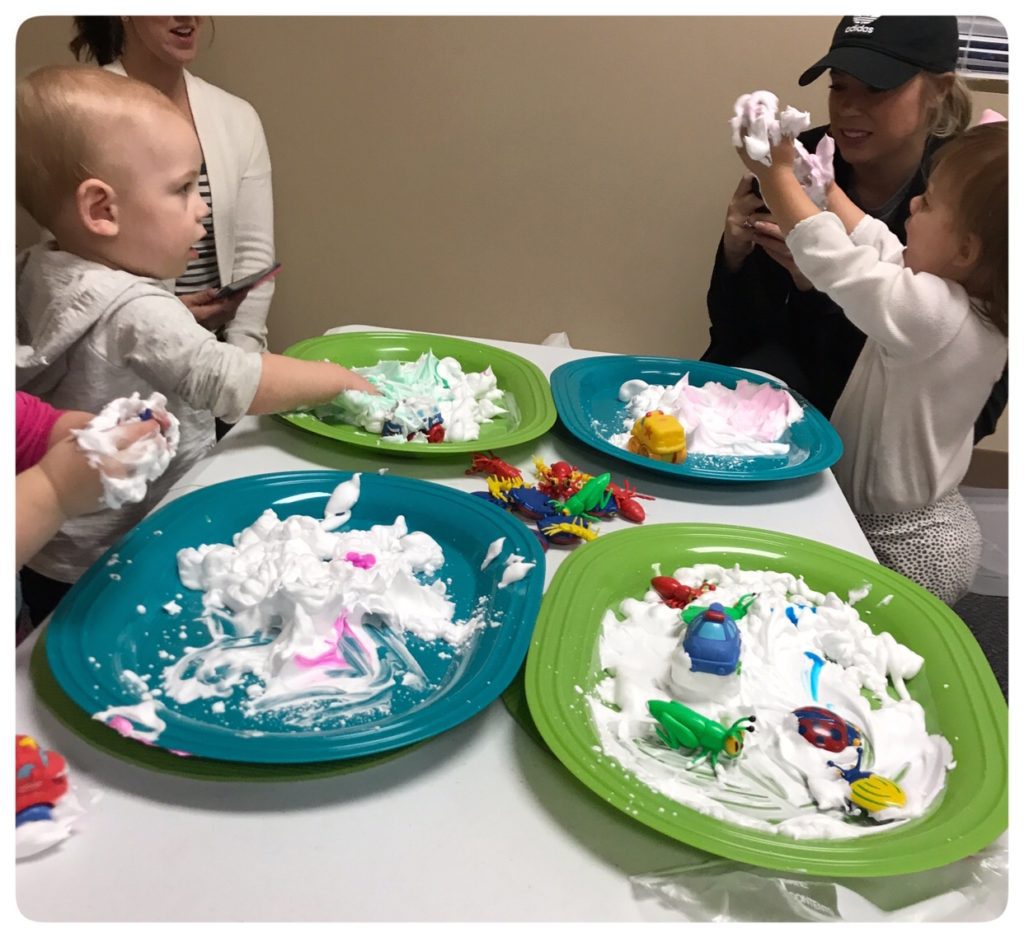
What is Sensory Processing?
Note to Parents – These activities MUST be supervised at all times!!!!
Five Senses – Sight, Hearing, Touch (Tactile), Smell, and Taste
Our senses allow us to experience and respond to our environment. Our brains receive sensory information from sensory receptors in our bodies; this information is directed to the brain where it is interpreted and processed.
In doing these kinds of activities we are doing today, it gives children a way to explore within the safe parameters and supervision we are providing them with. Sensory exploration is important for brain development and learning about their environment, but it also teaches them how to best navigate through the world, intellectually and even physically.
Today we’ll be doing just a few activities that will hopefully encourage your children to use their senses to explore. We’ll set up different stations that they can play in (remember every station may not be as exciting or interesting as another to them).
Fine Motor Sensory Stations
Fine motor skills (or dexterity) is the coordination of small muscles, in movements—usually involving the synchronization of hands and fingers—with the eyes.
1. Shaving cream* (put foil down on trays first for easy clean up) Yes, shaving cream is a very controversial item for sensory play. If you aren’t comfortable with it, don’t use it. If you are comfortable using it — go for it!
2. Water beads If you put these in a container on the floor, you may want to put down a cloth or tarp first. A big one. They bounce!)
3. Rice (We color our rice first with food coloring and rubbing alcohol). Use scoops and spoons and bowls. You can also put plastic bugs or other manipulatives to “hide”.
4. Water (We used several bath toys, plastic fish, along with funnels and fake aquarium plants.)
5. Pinto beans (Used small buckets and shovels, cups, etc.)
POINTS/SUGGESTIONS DURING ACTIVITY:
You can find many items at the dollar store, this does not have to be expensive (water beads, colored sand, plastic pails and shovels, glass beads clear water beads, finger paint, etc)
Usually I am teaching working with students and clients in a classroom setting. You can use smaller, more convenient containers, there are some half the size or even smaller if space is an issue.
Process Over Product
Sometimes It’s not about what you’ll have at the end of an activity. It’s about the benefit of doing the process that we need to focus on. Like cooking/baking. Perfect example. Cooking teaches so many skills: reading/following a recipe/sometimes even math. But it also has other benefits too like stirring, rolling, and kneading. These activities are of great importance. Especially for kids who might have processing issues. Children are pushing/compressing their joints, improving muscle tone, and are focusing on a specific activity. Having children at something like a sensory workshop can help you identify any concerns you might have about your child. If you do have any concerns, talk to your child’s pediatrician.
Social Skills
Having us do these activities in small groups is a great way to teach children how to share, wait their turn, talk with peers, and model behavior.
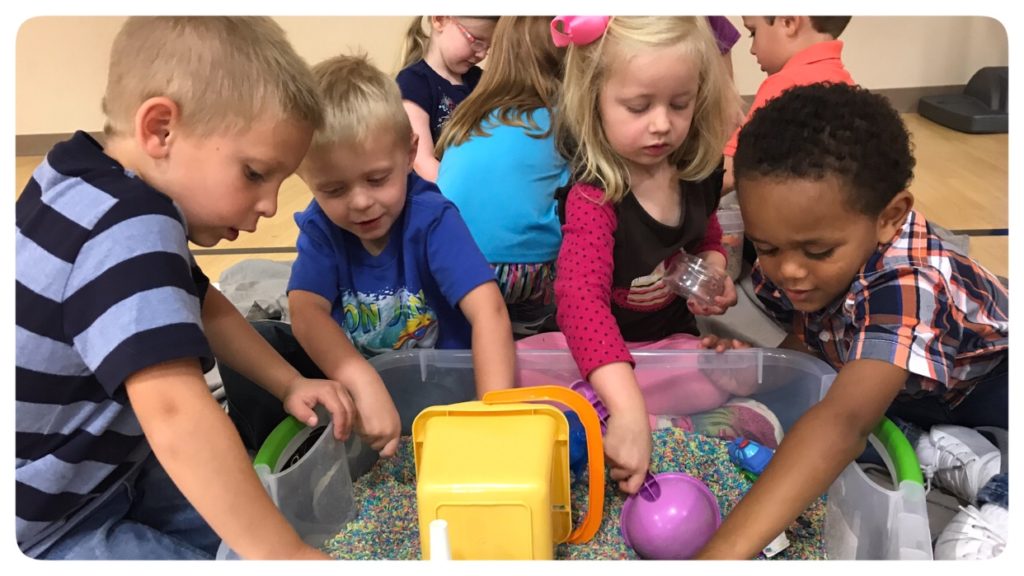
Group Project:
Finger painting (on tarps)
Story Time
The Listening Walk by Paul Showers and Aliki
Let’s Learn About the Five Senses by Nuria Roca and Rosa M. Curto
Two More Senses : Proprioceptive and Vestibular
We also have two additional senses: our proprioceptive and vestibular senses. Our proprioceptive sense is sensory information we receive from our muscles, joints, and body parts. This sense allows us to know things such as where our hand is, even when we are not looking at it. All the muscles and joints are sending messages to your brain telling it the position of your hand. Our vestibular sense is located in the inner ear and gives us our sense of balance and movement.
Gross Motor Skills
Gross motor skills are larger movements your baby makes with his arms, legs, feet, or his entire body. So crawling, running, and jumping are gross motor skills
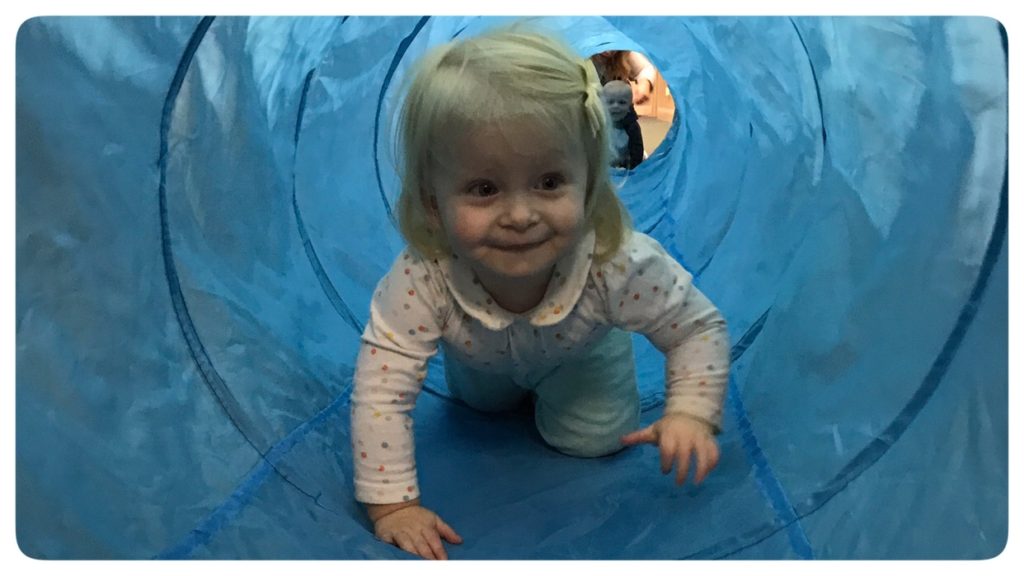
Gross Motor Stations:
- Tunnel LOVE this particular tunnel (pictured above). It’s a tunnel for dogs, but 18 feet long!
- Bean bag toss We use a large plastic 5 gallon bucket.
- Rings Colored rings on the floor to “hop” of “jump” through.
- Scooter boards Make sure children use them while seated.
- Balance beam Frog Tape line on the floor.
Yoga Poses
rag doll pose (forward fold)
downward dog pose
cat/cow pose
tree pose
butterfly pose
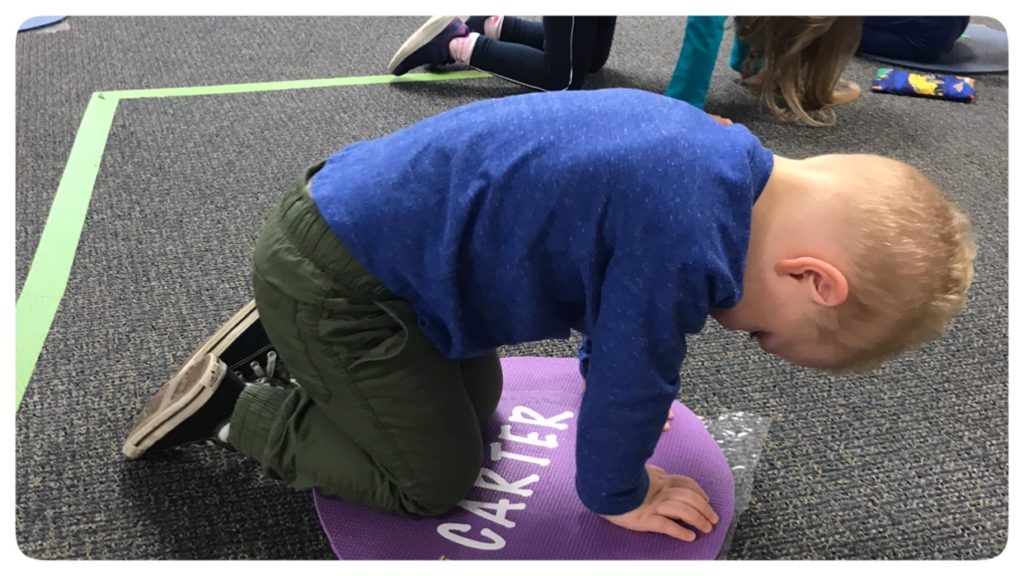
Rest & Relax (savasana)
No sensory lesson plan is complete without a little Rest & Relax. If the kids are up for it, try laying down in corpse pose (on back with arms to their sides, palms facing up — In Yogalore we call this “rest-ready pose”). Play some, soft, calming music and see if children can lie still for a minute or two. For them, this could feel like an eternity, so even trying it is a success!
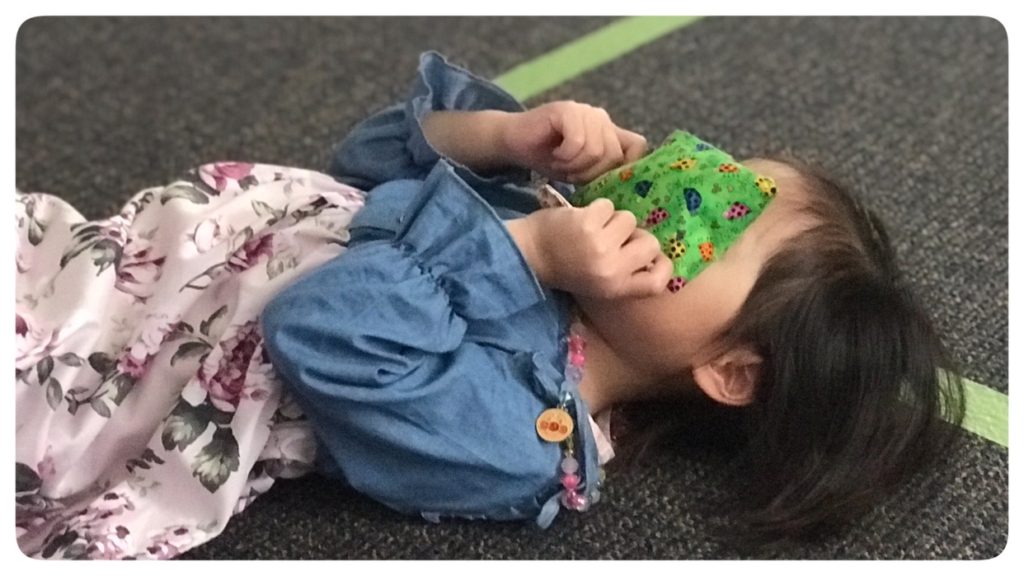
*there are affiliate links in this post. If you click and make a purchase, I receive a small commission at no extra cost to you. This helps me replace supplies and switch out my sensory bins 🙂

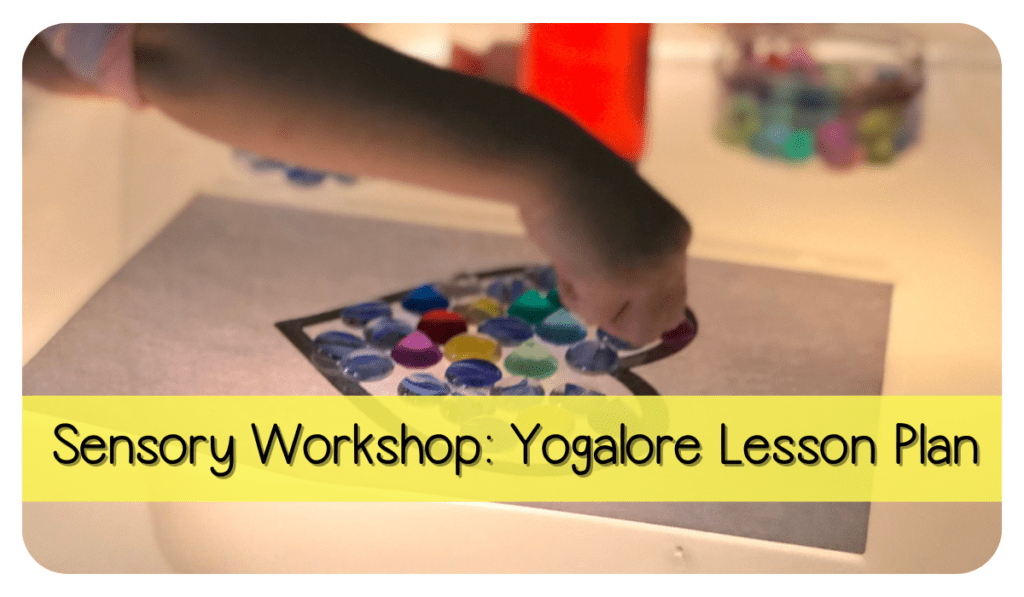
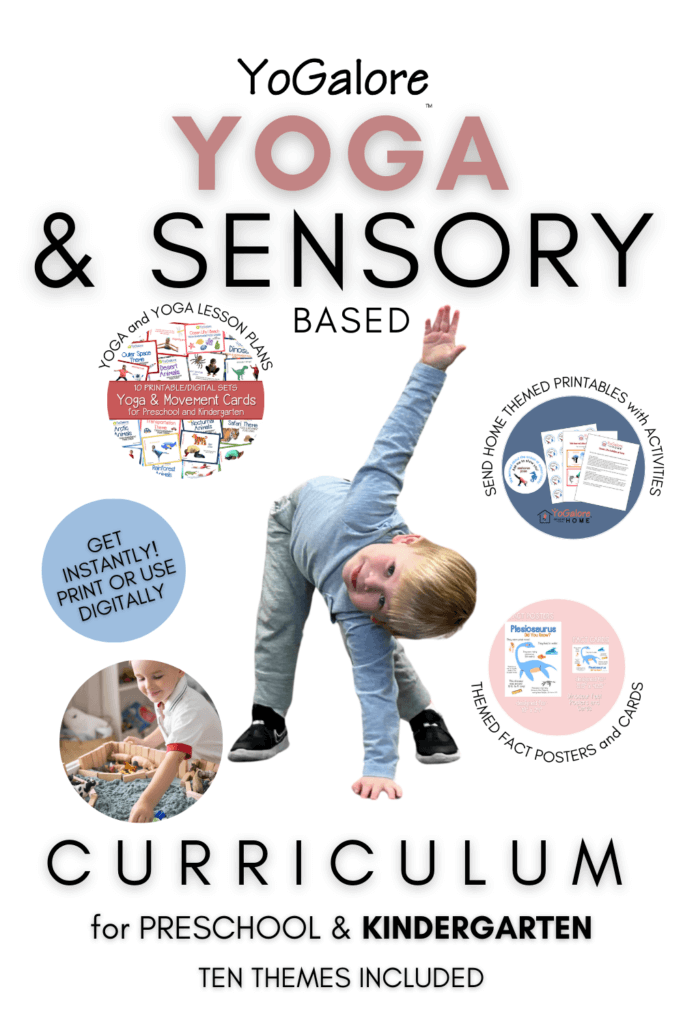
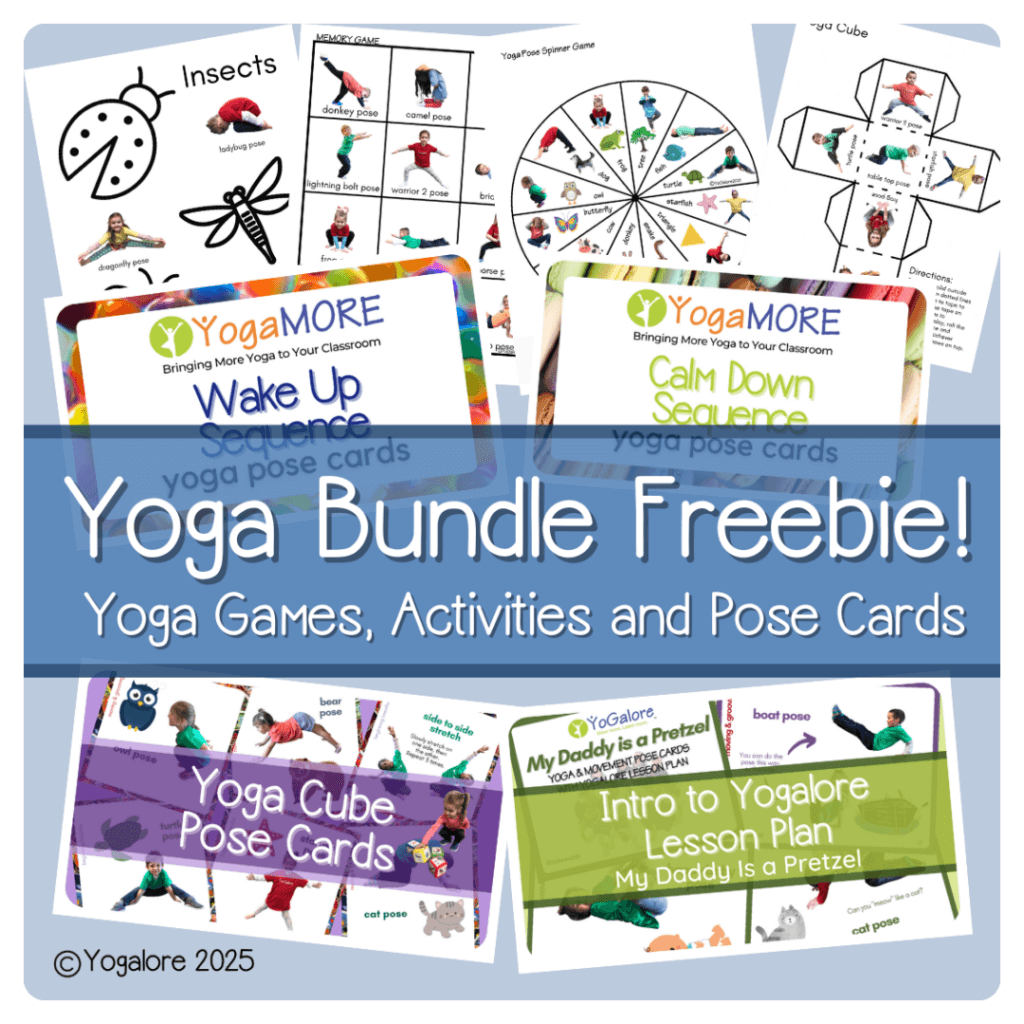

2 Responses